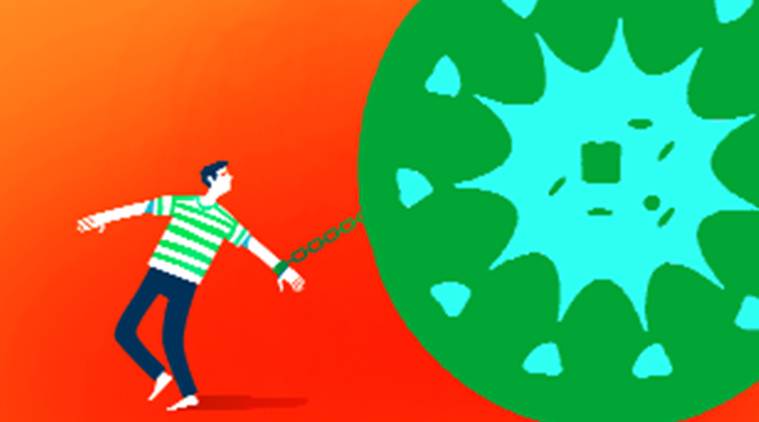 A senior state government official said that Punjab would be the first state in the country to use such GPS bands in the fight against Covid-19. (File Photo)
A senior state government official said that Punjab would be the first state in the country to use such GPS bands in the fight against Covid-19. (File Photo)
To rein in truant suspected coronavirus cases put under home quarantine, who violate guidelines and venture outside, the Punjab government is ready with a plan to put “lockable” Global Positioning System (GPS) bands on their wrists.
According to sources, a tender in this regard is ready and is likely to be floated by the state Health Department very soon to procure at least 1,000 such bands in first phase.
A senior state government official said that Punjab would be the first state in the country to use such GPS bands in the fight against Covid-19.
The move has been necessitated after a large number of persons who were home quarantined did not install on their phones the Cova app – the application by the state government on coronavirus pandemic.
As per the official guidelines, all home quarantined persons are supposed to install the Cova app, keep the GPS and Bluetooth on in the phone round the clock so that their movement could be tracked by the app.
A government functionary, however, said that majority who did not install the Cova app claimed they “did not have smart phones”.
“The GPS wrist bands are primarily for such people. The wearer would not be able to unlock the band. The band would be reusable,” said the functionary.
The official data accessed by The Indian Express revealed that till Tuesday, out of the 20,448 persons under active home quarantine, only 3,082 had installed the Cova app, translating into merely 15 per cent.
Sources told that Punjab Chief Secretary told Deputy Commissioners across the state on Monday to ensure that to track the movement of persons under active home quarantine, it should be ensured that maximum possible suspected patients download and install Cova app and turn on GPS and Bluetooth.
In a recent case, a Deputy Commissioner in Majha called up a violator after analysing data on Cova app telling him that he had violated the home quarantine. A government functionary said that the violator first contested that he was at home, but when told about his exact location and that it was Deputy Commissioner on line, admitted to having committed the violation.
The functionary added that often monitoring officials visit and turn on the GPS and the Bluetooth on people’s phones during home quarantine, as many of them are not tech savvy.
While merely 15 per cent of the cases under active home quarantine have installed Cova app, the data revealed that cumulatively out of over 92,000 who went under home quarantine since the outbreak, less than only 7,000 were the registered users of Cova app, translating into less than 7.5 per cent.
Punjab Chief Executive Office e-governance Ravi Bhagat said that as compared to physical monitoring of the suspected home quarantined cases, technology would be the key.
“With the massive projections of new cases in coming times, it would be difficult to track cases manually and technology has a big role to play,” said Bhagat.
In reference to people coming to the state from outside, of the 46,917 who returned to Punjab till Tuesday, 21,062 were home quarantined and out of them 77,619 installed the Cova app, just 16.24 per cent of the total who returned.
On May 29, Punjab Health Department had issued a set of guidelines, which included Rs 2,000 fine for violating home quarantine guidelines.
“Non-payment of fine by the violator will attract proceedings under section 188 of IPC as per the regulations framed under the Epidemics Disease Act, 1897,” the order had said.
From May 20 to June 7, based on registrations on Cova app, there were 50 geo-fencing breaches and action was pending in 14 cases, a pendency of 28 per cent.
For users of “non-smart phone”, the violation based on their location according towers of telecom companies are found to be even more. More than 52,000 breaches were noticed from May 1 to May 28. An official, however, said that the location monitoring data based on towers was “not that accurate as compared to Cova app data based on GPS”.
WHY PUNJAB WANTS GPS TAGGING
Cova App Download Rate in Punjab
* 15% — among active home quarantine cases
* 7.5% — among total home quarantine cases so far
Geo-fence breaches
* 20 – by smart-phone users (May 20 to June 7)
* 52,000 – by non-smart phone users (May 1 to May 28)